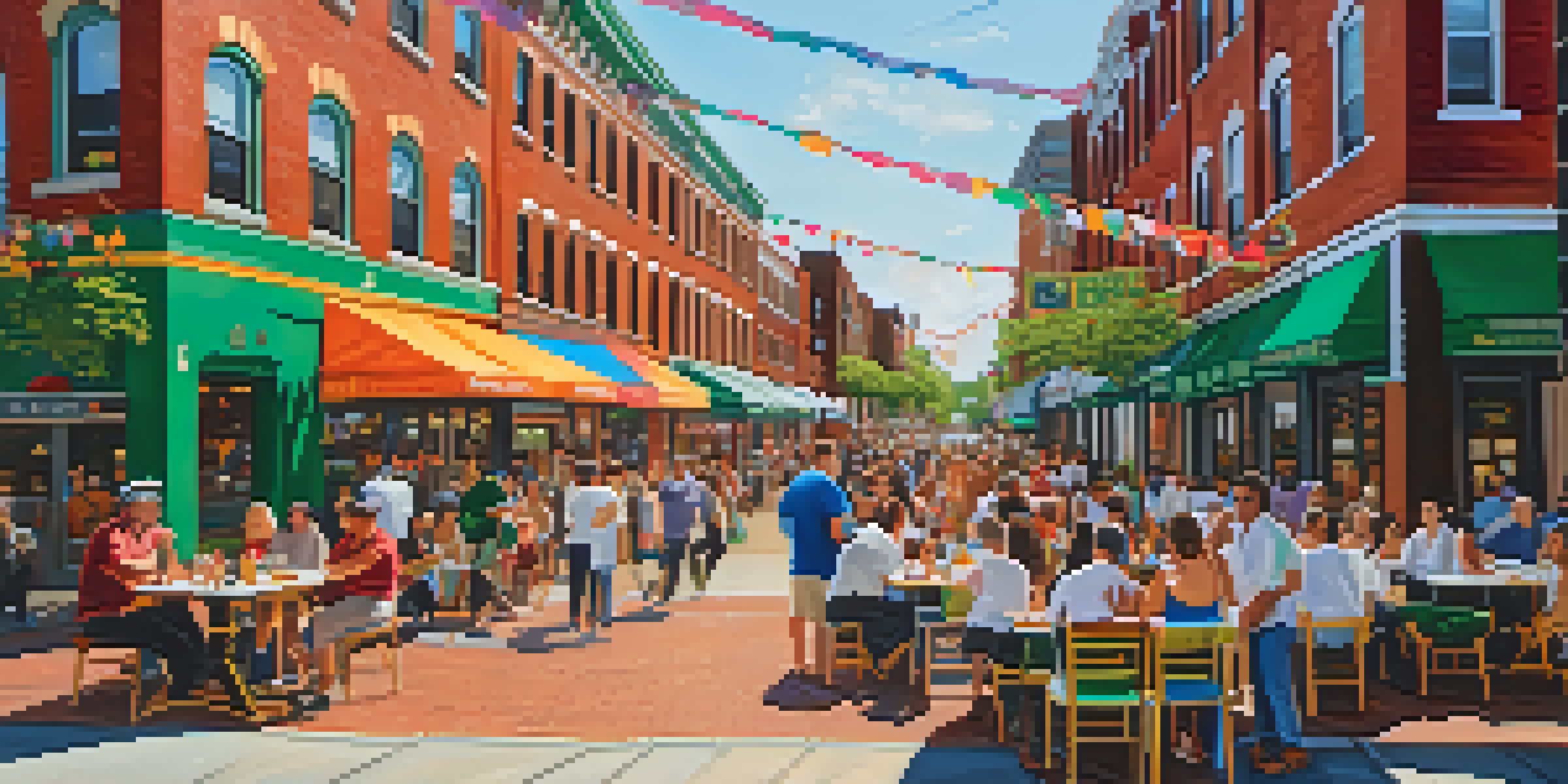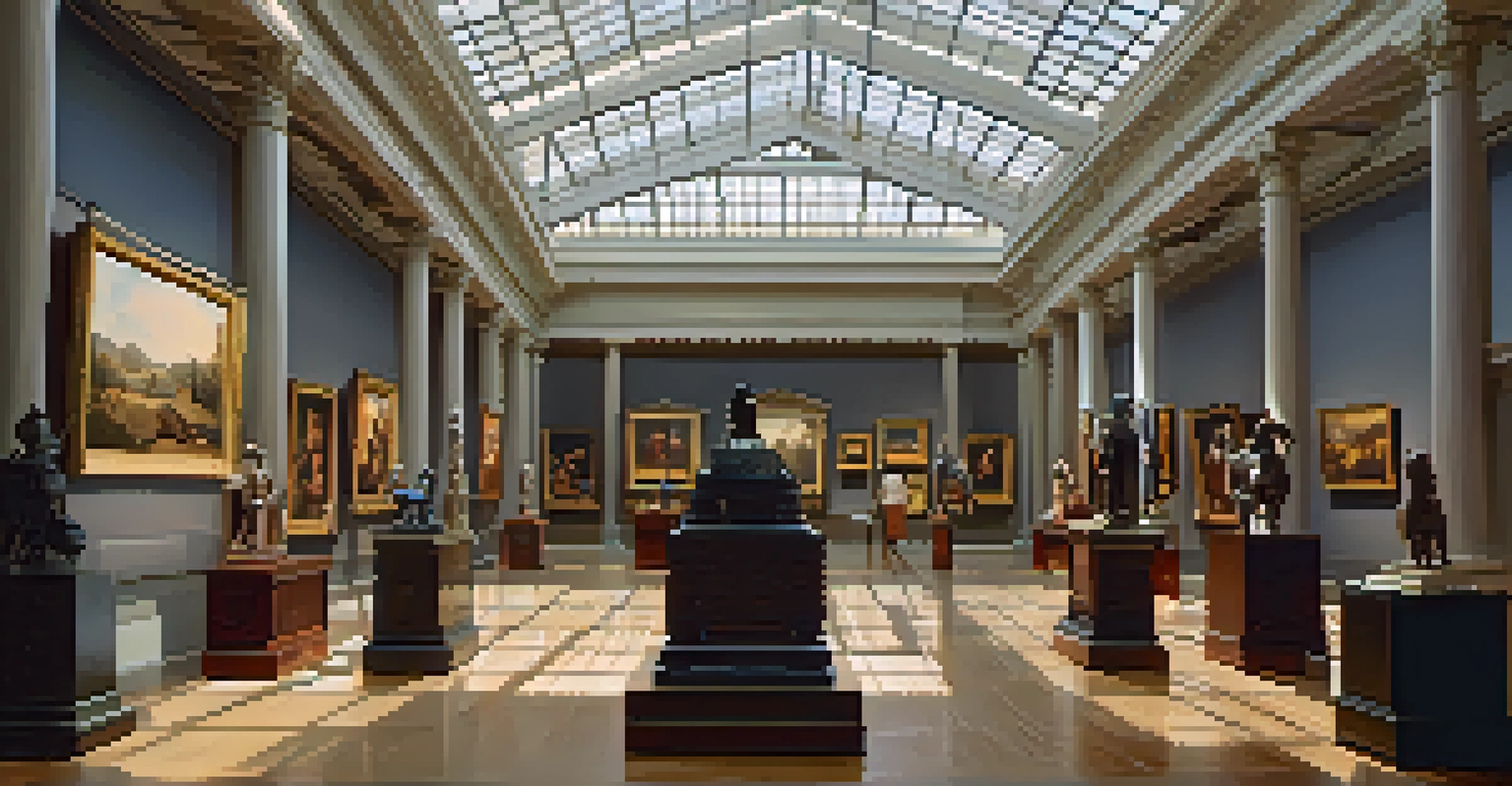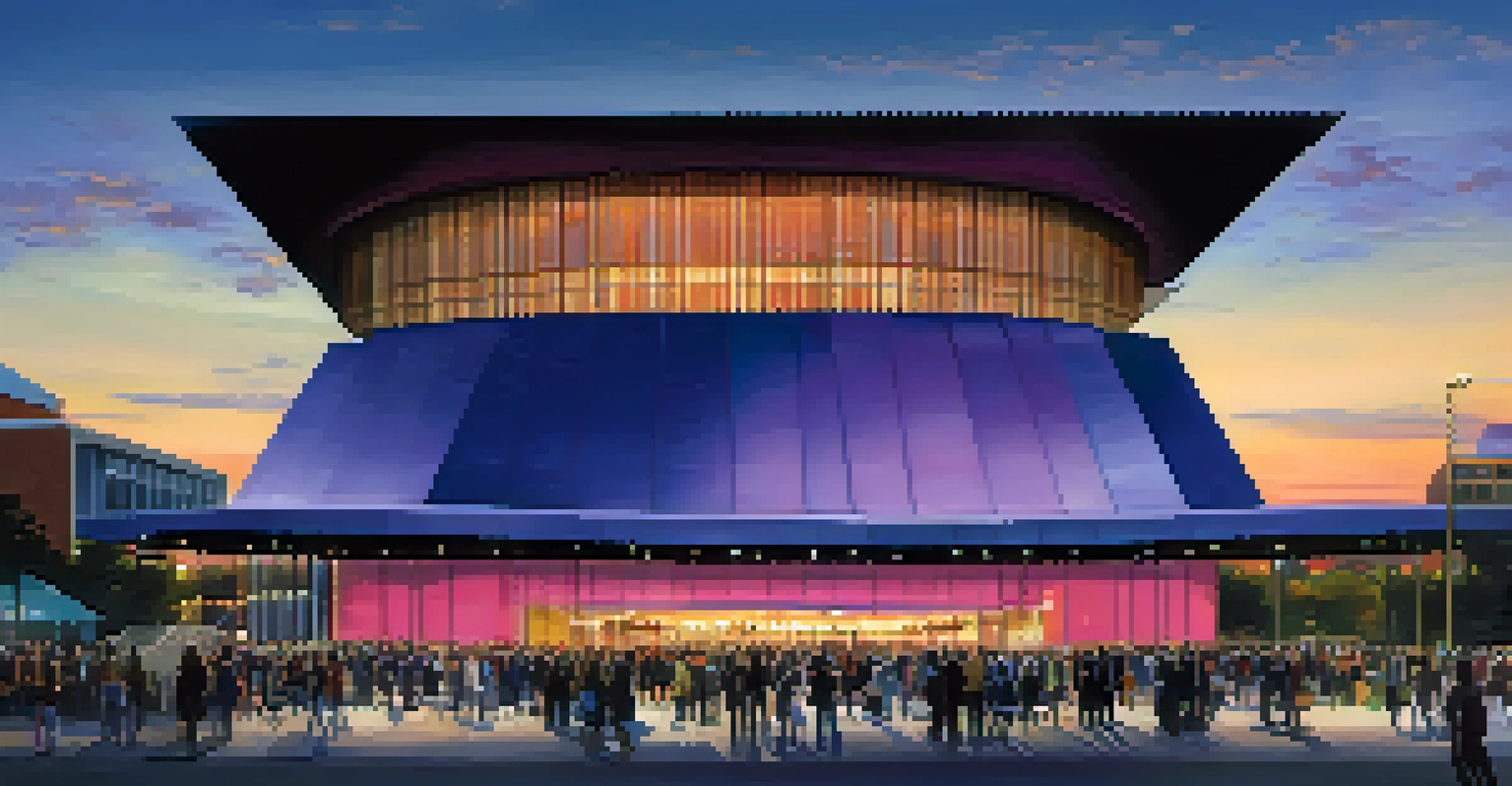Cultural Institutions in Newark: Guardians of Heritage

Introduction to Newark's Rich Cultural Tapestry
Newark, New Jersey, is often overshadowed by its neighboring cities, but it boasts a vibrant cultural history that is rich and diverse. From its early days as a colonial settlement to its status as a bustling urban center, Newark's institutions play a pivotal role in preserving this legacy. These cultural landmarks not only reflect the city's past but also shape its future.
Culture is the widening of the mind and the spirit.
As you stroll through Newark, you can feel the pulse of its history in the art, music, and traditions that thrive here. The city's cultural institutions serve as guardians of this heritage, showcasing the stories of its residents through various mediums. They are the heartbeats of the community, offering a sense of belonging and identity.
In this article, we will explore some of Newark's key cultural institutions, examining their contributions to the city's heritage and the broader impact they have on society. Each institution tells a unique story, offering insights into the rich tapestry that is Newark.
The Newark Museum: A Treasure Trove of Art and History
The Newark Museum is the largest museum in New Jersey and a vital cultural institution that embodies the city's artistic spirit. Its collection includes over 80,000 artworks, ranging from American art to ancient artifacts, making it a true treasure trove. The museum not only showcases art but also serves as a platform for educational programs that engage the community.

Visitors can explore diverse exhibitions that highlight Newark's history and its role in the broader narrative of American art. The museum regularly hosts events that invite local artists to share their work, fostering a sense of community and collaboration. This emphasis on local talent ensures that the museum remains a dynamic space that evolves with its audience.
Newark's Cultural Heritage Shines
Newark's vibrant cultural institutions play a crucial role in preserving and celebrating the city's diverse history.
Connecting art with history, the Newark Museum provides a unique lens through which to view the city's past while encouraging dialogue about its future. It stands as a testament to the importance of cultural institutions in preserving heritage and inspiring new generations.
The New Jersey Performing Arts Center: A Hub for Performing Arts
The New Jersey Performing Arts Center (NJPAC) is a monumental institution that celebrates the performing arts through a wide array of performances. As one of the largest performing arts centers in the state, NJPAC hosts everything from concerts and dance to theater and educational programs. Its mission to engage and inspire the community is evident in its diverse programming.
The arts are not a luxury; they are a necessity.
NJPAC not only attracts world-renowned artists but also provides a platform for local talent to shine. The center's commitment to arts education is reflected in its numerous outreach programs aimed at introducing young people to the performing arts. These initiatives play a crucial role in nurturing the next generation of artists and audience members.
With its stunning architecture and vibrant atmosphere, NJPAC has become a cultural landmark in Newark. It stands as a testament to the city's commitment to the arts and serves as a gathering place for community members to celebrate their shared heritage.
The Newark Public Library: A Repository of Knowledge
The Newark Public Library is more than just a place to borrow books; it's a vital cultural institution that serves as a repository of knowledge and history. Established in 1889, the library offers a wealth of resources that reflect the diverse narratives of Newark's residents. Its extensive collection includes rare manuscripts, photographs, and historical documents that tell the story of the city.
The library hosts a variety of programs that cater to people of all ages, promoting literacy and lifelong learning. From children's story hours to adult education classes, the library fosters a love for reading and knowledge within the community. It also serves as a safe space for people to gather and engage with one another.
Community Engagement is Key
Collaboration among cultural institutions and the community fosters a sense of belonging and pride in Newark's heritage.
By preserving the written word and providing access to information, the Newark Public Library plays a crucial role in safeguarding the city's heritage. It empowers individuals to explore their roots and connect with the broader stories that shape Newark's identity.
The Ironbound District: A Cultural Melting Pot
The Ironbound District of Newark is a vibrant neighborhood known for its rich cultural diversity, particularly its strong Portuguese and Brazilian influences. This area serves as a living testament to the city’s immigrant heritage, with cultural institutions that celebrate its unique history. The Ironbound is home to various festivals, restaurants, and shops that reflect the flavors and traditions of its residents.
Cultural events such as the annual Ironbound Festival bring together community members to celebrate their heritage through music, dance, and food. These gatherings foster a sense of belonging and pride among residents, highlighting the importance of cultural identity in an urban setting. The district's institutions play a pivotal role in preserving these traditions and sharing them with future generations.
As a cultural melting pot, the Ironbound District exemplifies how neighborhoods can reflect broader societal changes while maintaining their unique identities. This rich tapestry of cultures contributes to Newark's overall heritage, making it a vital part of the city's cultural landscape.
The Paul Robeson Galleries: Celebrating Art and Activism
The Paul Robeson Galleries at Rutgers University-Newark are dedicated to showcasing contemporary art that intersects with social justice and community engagement. Named after the renowned artist and activist Paul Robeson, these galleries highlight the importance of art in addressing societal issues. They serve as a platform for underrepresented artists, amplifying their voices and stories.
Through exhibitions and programs, the galleries encourage dialogue around topics such as race, identity, and activism. By fostering this conversation, the Paul Robeson Galleries play a critical role in educating the public and inspiring action within the community. They remind us that art is not just for appreciation but can be a powerful tool for change.
Art as a Catalyst for Change
Institutions like the Paul Robeson Galleries highlight the power of art in addressing social issues and inspiring community action.
In celebrating both art and activism, the Paul Robeson Galleries embody Newark's commitment to cultural heritage. They invite visitors to reflect on the past while inspiring them to envision a more equitable future.
The Coalition of Urban and Metropolitan Universities: A Cultural Advocate
The Coalition of Urban and Metropolitan Universities (CUMU) plays an essential role in advocating for urban cultural institutions like those in Newark. By fostering collaboration among universities and community organizations, CUMU works to elevate the importance of cultural heritage in urban environments. Their initiatives focus on integrating arts and culture into academic programs, fostering a deeper understanding of local histories.
Through partnerships and community engagement, CUMU helps cultural institutions in Newark thrive by promoting their significance in education and community development. This collaborative approach strengthens the ties between institutions and the communities they serve, ensuring that cultural heritage remains a priority.

CUMU's efforts highlight the vital role that educational institutions can play in preserving and promoting cultural heritage. By championing Newark's cultural institutions, they help to create a more vibrant and engaged community.
Conclusion: The Future of Cultural Heritage in Newark
As we reflect on the cultural institutions in Newark, it's clear that they are the guardians of the city's rich heritage. From museums and libraries to performing arts centers and vibrant neighborhoods, each institution plays a unique role in preserving and celebrating Newark's history. These spaces not only educate and inspire but also foster community connections and pride.
Looking ahead, the continued support for cultural institutions will be crucial in ensuring that Newark's diverse stories are told and celebrated. Community engagement and collaboration between institutions will help to create a sustainable future for the arts and culture in the city. As residents and visitors continue to explore Newark, they will discover the wealth of history and creativity that these institutions offer.
In embracing and preserving its cultural heritage, Newark stands as a beacon of diversity and resilience. The commitment to safeguarding this legacy will undoubtedly enrich the lives of future generations, ensuring that the city's vibrant history is never forgotten.